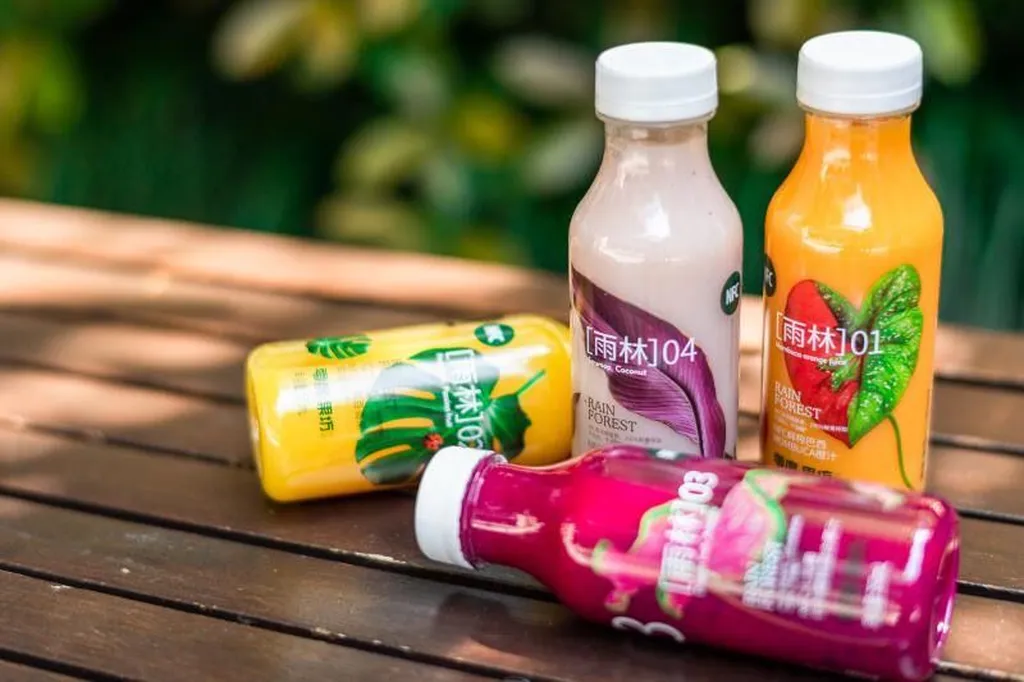In the heart of Xinjiang, a region known for its abundant and diverse fruit production, researchers are tackling a significant challenge: postharvest spoilage of flat peaches and white apricots. Led by Shun Lv from the Department of Pharmaceutical Science at The Open University of Xinjiang, a team of scientists has developed a fermented peach–apricot mixed juice (PAMJ) that not only addresses spoilage issues but also enhances the flavour profile and nutritional value of these fruits. Their findings, published in the journal ‘Foods’ (translated as ‘食品’), offer promising insights for the food and beverage industry, particularly in the realm of specialty fruit processing.
The research team employed a multi-strain synergistic fermentation approach, using a consortium of lactic acid bacteria to create PAMJ. “We aimed to optimize the fermentation process to achieve the best possible flavour and nutritional benefits,” Lv explained. The team conducted uniform design and single-factor experiments to fine-tune the fermentation parameters, resulting in a juice that boasted an optimal peach–apricot flavour profile, a balanced sweetness-sourness ratio, and high overall acceptability.
One of the most intriguing aspects of this study is the use of advanced analytical techniques to evaluate the flavour characteristics of PAMJ. Electronic noses, electronic tongues, gas chromatography–mass spectrometry (GC-MS), and sensory evaluations were all employed to ensure a comprehensive analysis. The results were impressive: PAMJ contained the highest contents of terpenes and ketones among the samples tested, with GC-MS identifying a total of 116 volatile organic compounds.
The fermentation process itself was optimized using response surface methodology, leading to the development of a post-mixing fermentation system. This system involved mixing peaches and apricots before fermentation with a carefully selected bacterial consortium. The consortium included strains such as *Limosilactobacillus fermentum*, *Lactobacillus acidophilus*, and *Lacticaseibacillus paracasei* subsp. *Tolerans*, among others. The optimal fermentation conditions were determined to be an initial inoculum concentration of 5.2 × 10^6 CFU/mL at 37 °C for 20 hours.
The benefits of this fermentation process were evident in the increased soluble solid content, superoxide dismutase (SOD) activity, and the number of volatile compounds in PAMJ. “The fermentation process not only enhances the flavour but also boosts the nutritional value of the juice,” Lv noted.
The storage stability of pasteurised PAMJ was also evaluated, with the team monitoring SOD activity and the number of volatile compounds (NVC) at 5-day intervals. The data were analysed using kinetic and Arrhenius equations, revealing that the shelf life of PAMJ varied depending on the storage temperature. At 4 °C, the shelf life was 69 days when NVC was used as the index and 99 days when SOD activity was used as the index.
The implications of this research are significant for the food and beverage industry, particularly in regions with a high production of specialty fruits. By leveraging lactic acid bacteria fermentation, producers can enhance the flavour, nutritional value, and shelf life of their products, opening up new market opportunities. “This study provides a novel strategy for processing specialty fruits in Xinjiang and beyond,” Lv said.
As the global demand for healthy and flavourful beverages continues to grow, innovations like PAMJ offer a glimpse into the future of the industry. The research conducted by Lv and his team not only addresses a critical postharvest challenge but also paves the way for new developments in the field of fermented mixed juices. With the findings published in ‘Foods’, the scientific community now has a valuable resource to build upon, potentially leading to further advancements in the processing and commercialization of specialty fruits.

